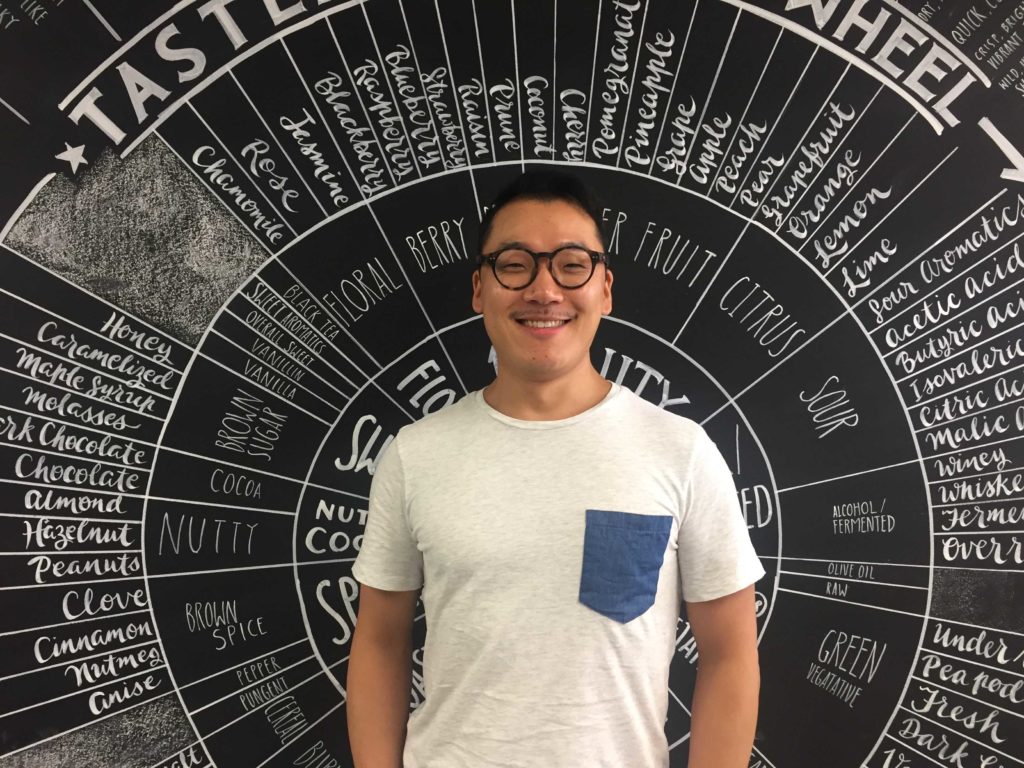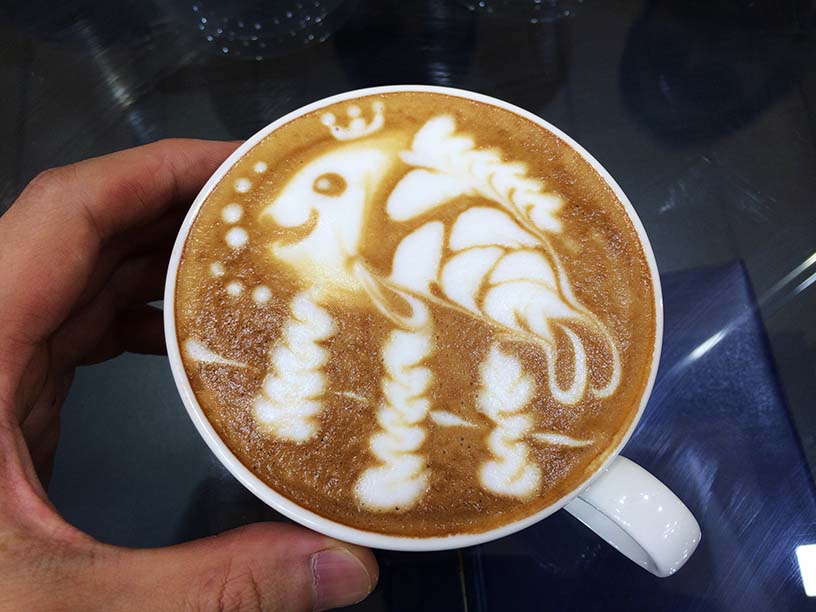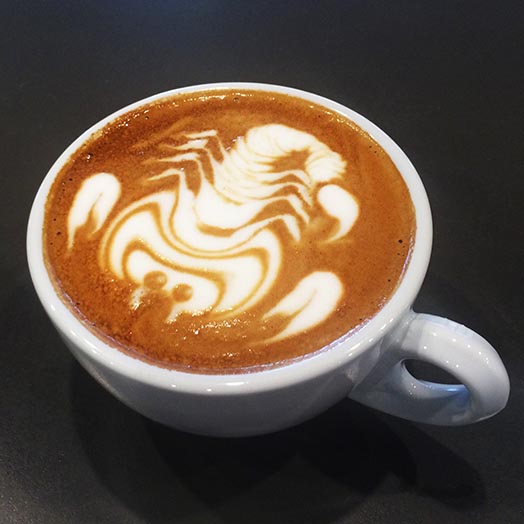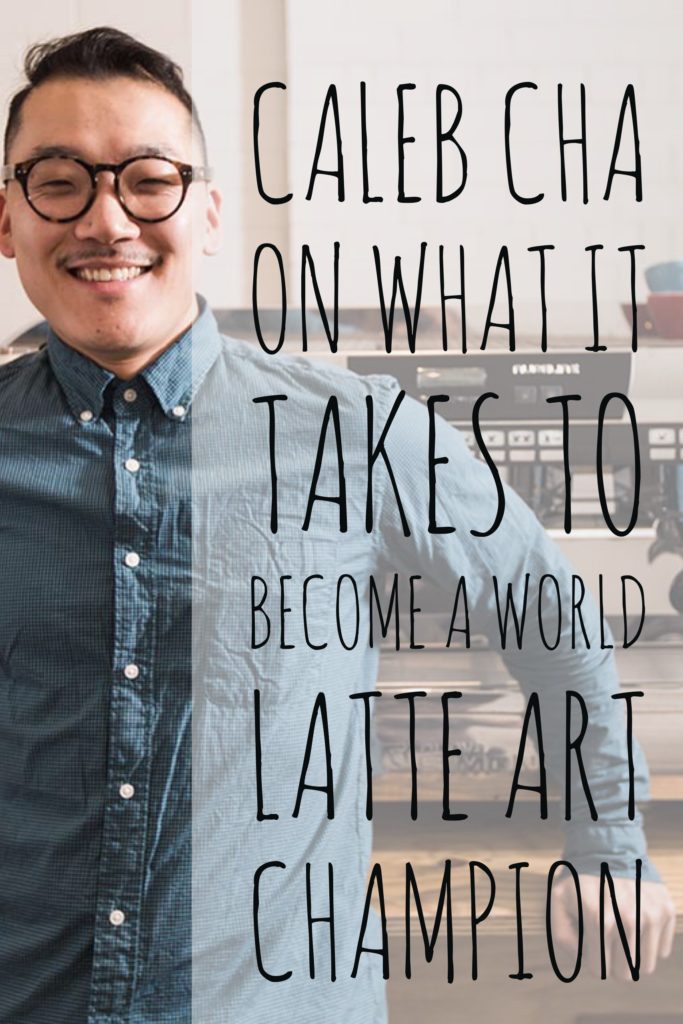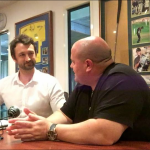Some would say that making the perfect cup of coffee is an art. As a matter of fact, there is an actual art to making coffee – latte art, that is. Using coffee as a canvas, latte artists make up a special breed of barista. Every year, competitions are held in Australia and around the world to showcase the best in this unique field. I sat down with the 2015 Australian and world champion, Caleb Cha, about his start in the field and his success.
Caleb didn’t start out with a passion for coffee. But once he arrived in Melbourne and took a job at a coffee shop, he started learning the art of extracting coffee. The more he learned, the more his passion grew. Eventually, he expressed that passion through latte art.
Melissa Caia, a teacher at the William Angliss Institute, first introduced Caleb to the art of latte design. One of his bosses also encouraged him to pursue this intricate artistic endeavor. He showed Caleb a particular pattern, and asked if he was able to do it. After a few tries, Caleb managed to produce the pattern, which turned out to be the 2008 world latte art champion’s winning design. Noticing Caleb’s talent, his boss urged him to start competing himself. That set Caleb down the road of learning and practicing latte art.
Even with all the hard work he had put into developing his skills, Caleb confesses that he still couldn’t believe that he had won the 2015 world championship. It hadn’t even been two years since he got into latte art. But over the course of seven weeks leading up to the championship, he worked on 14,000 cups of coffee. That’s a lot of coffee.
Caleb emphasizes the importance of staying calm. It takes a lot of focus and finesse to create award-winning latte art. But it can also get very frustrating. If you get frustrated while working, you might end up making more mistakes. Keeping calm while you’re at work will ensure that you maintain a steady hand and your art comes out the way you want it.
Working with such an evanescent art form, you should take photos of your work. Even when you’re just starting out, taking photos will help document your progress and can serve as a confidence booster. Sometimes Caleb admits that he would like to delete photos of his previous work, but he keeps them up as a testament to the progress he’s made.
If you want to get into latte art yourself, Caleb advises to first focus on controlling your hand movement all the way down to the joints. Considering how delicate latte art is, working on your fine motor skills is the most fundamental part of perfecting latte art. You can first practice with the simple designs of monk’s heads and hearts.
Once you’ve got a handle on those, you can start moving on to rosettas, tulips, and other more complex designs. Each type of latte art design requires various different motions and hand movements. For instance, a wiggling motion will help you make the perfect rosetta. Different angles and the size of the cup will also affect the designs that you can do.
Caleb claims that most of the different kinds of milks don’t affect his technique, with the exception of soy and almond milk. He finds these milks to be the most difficult to pour when working on latte art. But he’s managed to find a technique that allows him to work with these milks. He advises to steam soy milk for less time and to wait for ten seconds before swirling it and using it in your art. That way, it will be almost like working with whole milk.
All of this Caleb has learned on his own. Though he turned out just fine, he admits it would have been nice to have someone to really help him learn this very intricate skill. As a self-taught latte artist, he admits that he might’ve been able to progress much more quickly if he had had a mentor early on.
But the most important takeaway for Caleb? Don’t give up on something once you’ve started it. Even when things got difficult, Caleb told himself, it’s too early to stop. To this day he has yet to start something without seeing it through to the end.
Just as it is with any skill, latte art takes patience and practice. Whether you want to be a world champion or just have your lattes look nice, anyone can make great latte art. Who knows? You could even go from novice to world champion in the space of two years. With motivation and dedication, Caleb says, anything is possible.
You can find Caleb on Facebook under the name Caleb Tiger Cha, and on Instagram as @CalebTiger. You’ll see photos of his most recent work as well as receive updates on his whereabouts, workshops and events.
Caleb Cha’s Ten Takeaways
-
Be humble, reliable, and responsible.
-
If you want to get into latte art, or really any aspect of the coffee industry, find someone who can give you good advice.
-
If you want to work on achieving something, there’s no better time than now.
-
Read as much as you can about the coffee industry – the ASCA website is a good place to start.
-
When working on latte art, stay calm and keep your frustrations in check.
-
Controlling your hand movements and perfecting your fine motor skills will help you make great latte art.
-
If you’re a café owner, you can motivate and encourage talented and interested employees into pursuing latte art. It may help bolster employees’ skills and your business as well.
-
No matter the milk or machine, great latte art is possible with the right techniques.
-
If at first you don’t succeed, try and try again.
-
Once you start something, don’t give up until you see it through.
Podcast: Play in new window | Download
Subscribe: RSS

